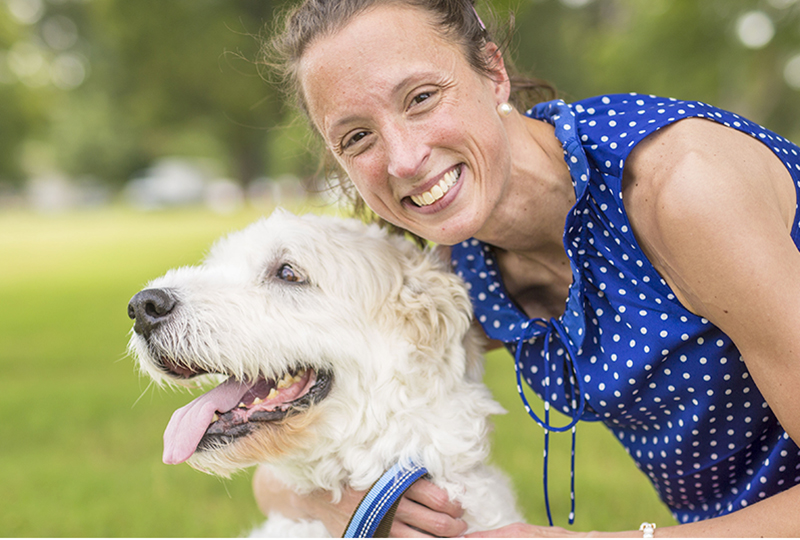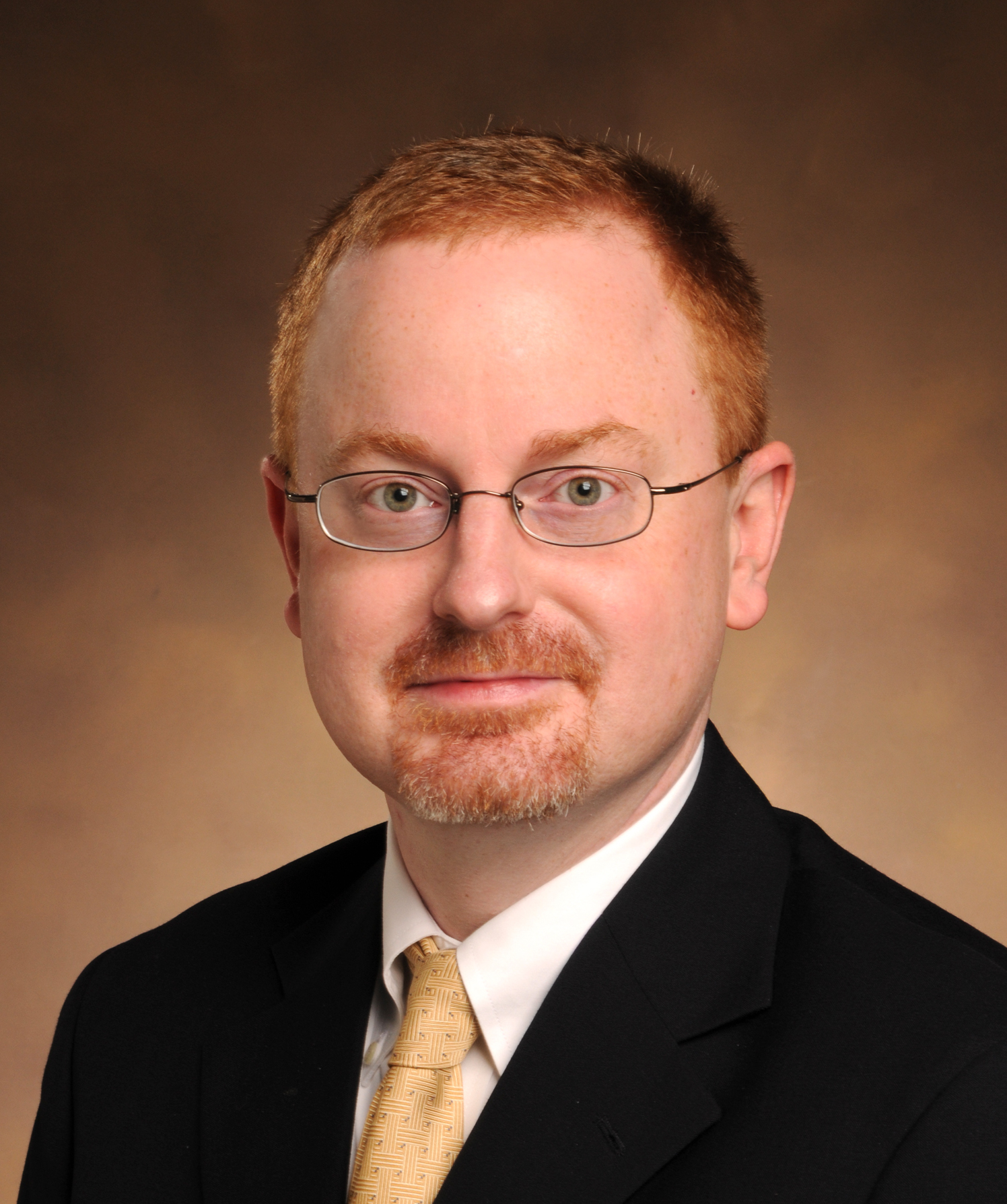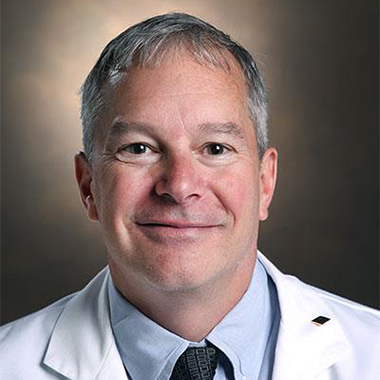Cochlear implants saved her career. So did her faith that she’d find a way.
Allyson Sisler-Dinwiddie, Au.D., will never forget the day her hearing went away. She was just waking up, home alone on a Saturday morning, when her dog, Maddie, leapt off the bed and darted to the bedroom door. Sisler-Dinwiddie grabbed the hearing aids she’d used for years from the nightstand and put them in her ears. But that didn’t help. “I could tell she was barking, but I couldn’t hear her. I picked up the phone to see if there was a dial tone, turned it all the way up. Nothing.
“I’ve never felt so scared, so lost, so alone in my entire life.”
Sisler-Dinwiddie had every reason to worry.
At the time, in 2005, she was midway through graduate studies to become an audiologist. Could a deaf audiologist, who struggled through a difficult childhood with hearing loss, help people to hear?
The answer was yes. She now works with a committed group of audiologists, surgeons, researchers and others whose groundbreaking research could dramatically change how cochlear implants are implanted and programmed, improving hearing for potentially more than 400,000 people worldwide who depend on them.
Getting to that point took a wellspring of willpower, cutting-edge medical devices and exclusive research underway at Vanderbilt University.
“I’ve been so lucky to be here because I’ve been able to take part in some of that research and, to be honest, it’s truly changed the way my ears work and my confidence in general — just being able to understand,” she said.
Her childhood difficulties, coupled with her work, have helped her pave an easier path for today’s children with hearing loss and the adults they become.
Born with hearing loss
Allyson Sisler was born in Columbus, Ohio, on Feb. 13, 1981, three months premature, weighing just 1 pound and 13 ounces. She spent her first 6 months in the neonatal intensive care unit at the Ohio State University Medical Center. Amid the challenges of caring for a premature child, Jon and Gayle Sisler had no idea their early arrival came with hearing loss. There were simply no newborn hearing screenings then to tell them otherwise.
“I really didn’t start to develop any speech at all for a while,” Sisler-Dinwiddie said. And once her speech came, “it was immediately apparent that I didn’t have any high-frequency sounds,” she said.
She couldn’t hear the letters “s” or “f” and the sounds “th” and “sh.” She couldn’t distinguish between singular and plural words. She couldn’t fully understand the sounds in her maiden name, Sisler.
As a result, she didn’t start speaking at the usual age. Once she did, she stuttered as she tried to express what she wanted to say. Sisler-Dinwiddie recalls struggling to produce fluent speech, repeating sounds, syllables and eventually words. Sometimes “it would take what felt like forever to get anything out,” she recalled.
“We know the first three years of life, when the brain is developing and maturing, is the most intensive period for acquiring speech and language skills,” Sisler-Dinwiddie said. If this critical window of time is missed, it becomes increasingly difficult to learn speech and language. Combined with the fact that she couldn’t hear most middle- to high-pitch sounds during this time, it’s not surprising that Sisler-Dinwiddie struggled in school.
The origin of her speech problems remained a mystery until she was 8. Her mother, the school nurse for Marion County (Ohio) Schools at the time, was administering a hearing screening for students at Waldo Elementary School. Her mom realized that her daughter wasn’t recognizing the sounds she was presenting. A few others at school tested her and came up with the same result.
“At that point, we literally left school,” Sisler-Dinwiddie said. Mother and daughter drove 40 minutes south to Ohio State University. There, she had her first clinical hearing test, which confirmed her condition, and her mother drove her home with several hearing aids in tow.
Once home, her mom and dad sat her down at the dinner table, with three models of hearing aids spread before her. She recalls that her dad, a man of few words, looked at her solemnly and said, “We can tell you that these are going to help, but this is going to be up to you, and so all we can ask is that you try. Try. Pick one.”
“I picked one,” Sisler-Dinwiddie said.
Her father continued, “Ally, no matter what happens, I want you to promise me right now, you will never ever let your hearing or lack thereof get in the way of any dreams that you have or anything that you want to do.”
Sisler-Dinwiddie said, “That conversation stuck with me for the rest of my life, to this very day. Any time there’s a challenge, which there has been along the way, you just have to trust that there’s a way.”
Indeed, the challenges had only begun.
Adapting to hearing aids
The teasing began in middle school, a tough time for many children, but especially hard for her. For nearly a semester, she would take her hearing aids off once she got to school. Once her grades began dropping, her teachers discovered something was wrong.
Sisler-Dinwiddie poured her frustration into sports — particularly basketball, track and field, and swimming. Her dedication paid off; she went to college at Miami University in Oxford, Ohio, on a basketball and track scholarship. It’s where she found her calling.
One day, when she took her hearing aids to an audiologist and professor at the school, the professor asked her if she would speak to her class, Introduction to Communication Disorders, about her experience growing up with hearing loss.
“That was the very first time anyone had ever, I guess, asked me to share a story about my life,” she said.
She accepted the invitation and addressed a “huge group of people who were completely excited that I was there and wanted me to join them in studying speech and audiology.”
At the time, she wasn’t studying to be an audiologist. She was majoring in sports medicine and kinesiology, which she loved, but didn’t know what she would do after graduation.
She had thought before about becoming an audiologist, but figured that her hearing impairment would prevent her from administering hearing tests. Her peers persuaded her that she could use an FM system, an Assistive Listening System that utilizes radio broadcast technology to enhance the ability to hear someone speaking.
Sisler-Dinwiddie soon switched her major to audiology. She graduated from Miami University in 2003, and began looking for potential graduate schools. She quickly arrived at Vanderbilt. “It just took one visit, to come to Nashville, and I fell in love with the people,” she said.
In 2003, she joined 10 students from across the country in the first incoming doctorate of audiology class at Vanderbilt University School of Medicine. Another hurdle down, she would soon face the biggest one of her life.
An accident
Sisler-Dinwiddie had just left her first class in the summer of 2004 and headed down West End Avenue in her Mitsubishi Eclipse with the sunroof open and windows down. Suddenly, a car pulled out right in front of her, totaling her car.
“I don’t remember much else aside from the many people that surrounded me at the time after I was pulled from the car,” she said. “I do have some recollection of a lot of smoke, shattered glass, debris all over me.”
She was left with a head injury.
“My right eye didn’t work in sync with my left,” she said. She spent months at the Pi Beta Phi Rehabilitation Institute at Vanderbilt while dealing with short-term memory problems.
Her hearing was also beginning to fade. At first, she blamed it on her hearing aids, sending them back to the manufacturer for repair several times. She tried progressively stronger hearing aids, with no luck.
And then came the Saturday morning when she couldn’t hear her dog bark. The audiogram she received later told the tale: She met the criteria for a cochlear implant.
From hearing aids to cochlear implants
A cochlear implant consists of an internal device surgically implanted in the ear and an external device, a sound processor, worn behind the ear and connected to the internal implant by a magnet. This allows the internal and external devices to talk to each other. The electrodes in the internal implant deliver electrical stimulation to the auditory nerve, taking the place of thousands of tiny hair cells within the inner ear that perform the function for people who hear normally.
Seven surgeons perform cochlear implant surgery at Vanderbilt. After the implants are installed, staff audiologists fine-tune them with a computer.
Vanderbilt, and the program it merged with in 2004, the Otology Group, have performed 2,500 cochlear implant surgeries in Nashville in the past 35 years, said David Haynes, M.D., director of the cochlear implant program. More than 200 surgical procedures are completed each year.
While cochlear implants are considered standard treatment for severe to profound hearing loss, the quality of hearing they provide is not the same as normal fidelity and some recipients may experience only marginal hearing restoration. For Sisler-Dinwiddie, the choice was getting an implant or adjusting to being deaf in a hearing world.
“You would think that being in audiology that the decision to get a cochlear implant was easy, but it really was not,” Sisler-Dinwiddie said. “It really gave me a perspective on the other side of the table.”
She was scared. Online simulations of cochlear implant hearing sounded like Donald Duck, she recalled – high pitched and unusual.
“This was somebody who had been very high functioning,” said Robert Labadie, M.D., Ph.D., who performed Sisler-Dinwiddie’s surgery in October 2005. “Her career aspirations included the ability to hear so that she could really excel in her field. So to all of a sudden find out … everything had been reversed, now she was going to be the patient that an audiologist was going to have to help. That was a very trying thing.”
Sisler-Dinwiddie went into surgery with realistic expectations, and was “blown away by how amazing my world was after (the implant) was turned on.” She heard birds and the sound a flip-flop makes for the first time.
The longer she had the implants, the better she could hear. Nine months after her first cochlear implant, she received another in her left ear, resulting in further improvement.
In May 2007, she stood on the stage at the Ryman Auditorium and received her doctorate. “I remember I had to kind of choke back the tears because all I could think was I am so, so thankful for everybody here helping me be able to walk across the stage, and the fact that I was able to hear my name being called was enough to make me cry with tears of joy,” she said.
Helping children hear, and feel less alone
Sisler-Dinwiddie now spends her career ensuring a new generation develops great hearing and speech with the same “magical miracle electric ears,” as she refers to her cochlear implants. In her day job, she is the educational audiologist for the Mama Lere Hearing School at the Vanderbilt Bill Wilkerson Center. The school teaches about 35 children ages 18 months to 5 years how to listen, read, sing and talk. The goal is to bring them to the level of their regular-hearing peers by first grade.
When she’s not at the school, she is testing cochlear implants during surgery. And two days a week, she works with school systems in nearby Sumner and Bedford counties to support children with hearing loss.
“While there have been several hurdles to clear along the way, I’ve come to realize there’s a much larger purpose behind the many challenges faced thus far, especially when it comes to my ears,” she said. “If nothing else, I hope the many kids and families that I cross paths with each day feel less alone in this journey, less frightened of the unknown and more prepared to move forward with a more positive outlook on the many ways in which hearing loss has impacted their life.”
This story, written by Matt Batcheldor, initially appeared in the summer 2015 issue of Vanderbilt Medicine Magazine.
Read More
Many older adults lose hearing as they age, but, surprisingly, it’s not always obvious to them how much sound they’re missing. Know the signs of hearing loss in your older relatives so they can get appropriate screening, and possibly hearing aids or cochlear implants.



